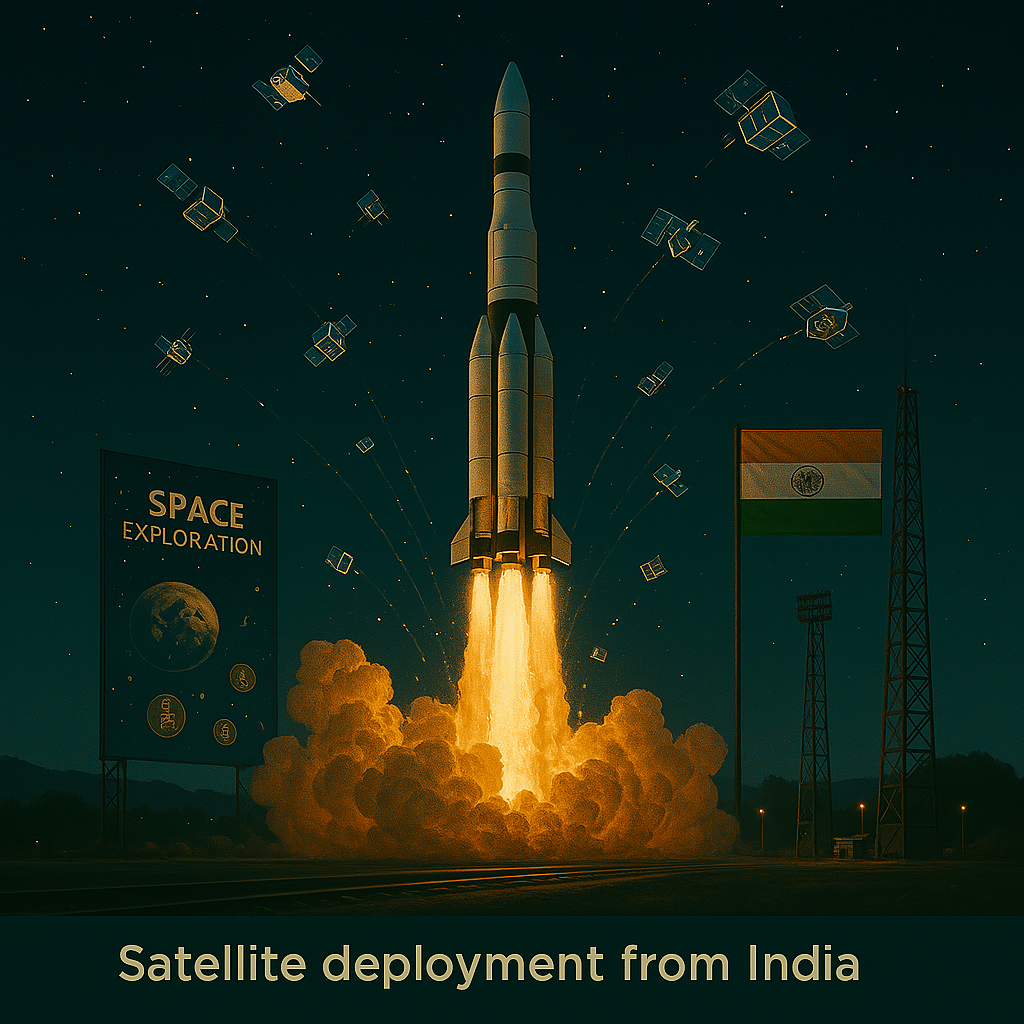What is Low Earth Orbit (LEO)?
Low Earth Orbit (LEO) refers to the region of space that lies roughly 160 to 2,000 kilometers above Earth’s surface. This zone is now the most crowded and competitive area in the sky—and for good reason.
Unlike traditional geostationary satellites (35,786 km high), LEO satellites:
- Have shorter latency
- Offer faster data transmission
- Are cheaper to launch and maintain
From Elon Musk’s Starlink to Amazon’s Project Kuiper and ISRO’s LEO missions, everyone wants a piece of this orbital turf.
🛰️ Why Is Everyone Investing in LEO?
1. Satellite Broadband
LEO is powering global internet coverage:
- Starlink (SpaceX): 5,000+ satellites in LEO
- OneWeb: Providing coverage in remote regions
- BharatNet (India): Exploring LEO options for rural broadband
“LEO could bring high-speed internet to India’s remotest corners,” says Telecom Secretary Neeraj Mittal.
2. Earth Observation & Climate Monitoring
Satellites in LEO can take high-resolution, real-time images of:
- Forest fires
- Flood patterns
- Urban growth
This has applications in:
- Disaster management
- Smart city planning
- Agriculture monitoring
3. Defense and Surveillance
LEO satellites are fast becoming essential to modern defense systems:
- Border monitoring
- Missile detection
- Maritime security
India’s SBS (Space-Based Surveillance) program relies heavily on LEO satellite deployment.
4. Private Space Stations & Tourism
With the International Space Station (ISS) set to retire by 2030, companies like Axiom Space, Blue Origin, and SpaceX are planning:
- Private space stations in LEO
- Space hotels and labs
LEO is poised to host the next generation of space habitats.
📊 The Growing Market: By the Numbers
| Sector | Global Value by 2030 |
|---|---|
| LEO Broadband | $120 billion |
| Earth Observation | $16 billion |
| Defense LEO Assets | $65 billion |
| Private Space Stations | $10 billion+ |
India aims to capture 10% of the global LEO market through ISRO and private partners like Skyroot and Agnikul.
🚀 India’s Role in the LEO Gold Rush
- ISRO’s PSLV missions are well-suited for launching small LEO satellites
- Startups like Pixxel, Digantara, and Astrobase are building LEO constellations
- IN-SPACe is streamlining private entry into India’s orbital economy
India’s Gaganyaan program could also test LEO space habitats by 2028.
🔒 The Challenges of LEO Real Estate
1. Orbital Congestion
With thousands of satellites already in LEO, collision risks are rising. Space debris is a growing threat.
2. Spectrum Battles
Satellite constellations often clash over radio frequency rights.
3. Regulatory Gaps
There’s no global law defining LEO ownership, leading to a “wild west” environment in space.
“We need new space laws before we have orbital land grabs,” warns astrophysicist Dr. Sujay Mehta.
🧠 Final Thoughts: Space is the New Infrastructure
Low Earth Orbit is no longer just about satellites—it’s the new digital backbone of global tech. From internet to defense, LEO is driving the next decade of innovation.
Countries that move fast—and smart—can gain strategic and economic advantage. India has the talent, technology, and timing to lead this orbital revolution.








+ There are no comments
Add yours